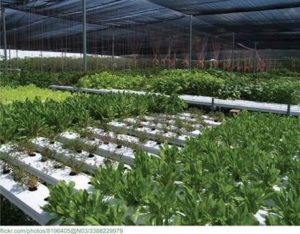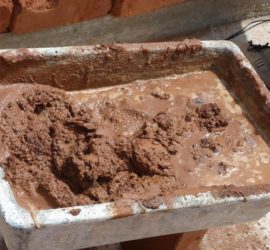
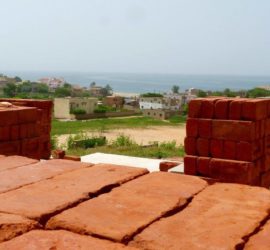
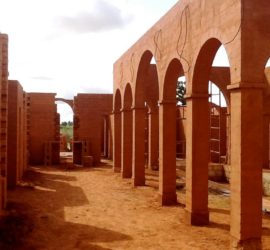
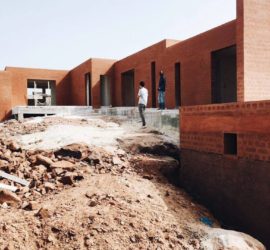
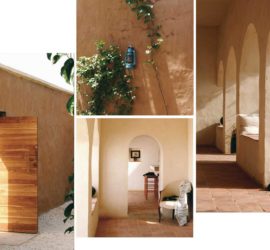
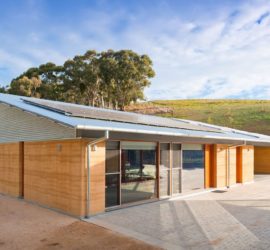
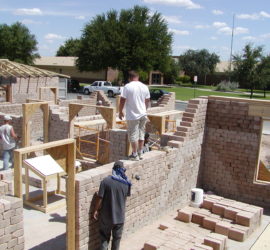
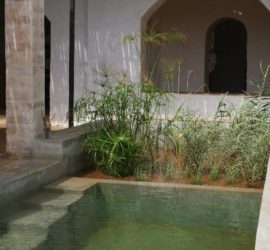
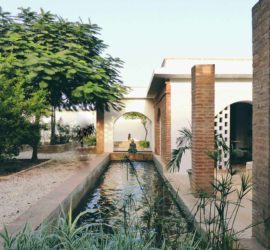
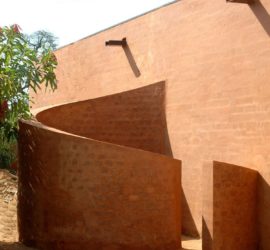
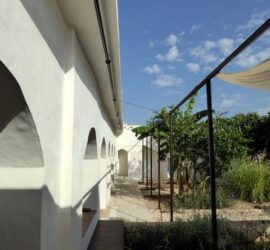
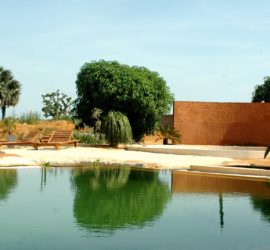
The first step towards personal empowerment is to free us from overwhelming debt and bondage. The terraculture built agri-city offers an attractive lifestyle alternative built with low-cost, abundant Earth’s resources.
Community members will implement terraculture building solutions creating homes and agriculture production structures to support 250 sustainable households using A household consists of a terraculture home and greenhouse situated on a two-acre parcel in the agri-city model. The homestead is situated within a multilayered community complete with business, social gathering places, art and education centers, healthcare and wellness centers, animal care, and much more. Web connectivity and business development portals allow connectivity to family and friends globally. Individual sovereignty will be respected and taught, while collaboration and good governance are practiced. We continually refine our models to be as easy to replicate as possible. Economic outcomes include commercial sale of agriculture products, ecotourism and internet based cottage industries.
The growing model as the primary economic engine will feature crops creating the most edible biomass per unit of growing space in our year-round terraculture greenhouses. Leafy vegetables such as lettuce, chard and spinach, which are a mainstay for a healthy diet, are some examples of the primary cash crops in terraculture model growing model.
Plants requiring large open acreages, such as grains and cover crops are grown outside the terraculture units to support bee habitat and the production of honey, another primary economic mainstay for the community.
Each Terraculture Project Develops In Four Stages
Stage 1 – Recruitment, Workshops and Skill Training
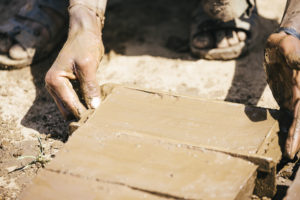
Building practices training and brick clay production
Campfire socials and membership building
Site location assessment and negotiations with local government and community
Water acquisition as needed
Stage 2 – Property Acquisition and Launch
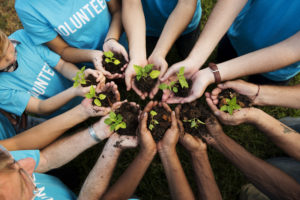
Utilize people with jobs on weekends; others work on-site year-round
Build first temporary housing unit supporting up to forty people for a work weekend retreats
Personal two-acre member homesteads underway
Temporary housing units become eco-tourism housing, visitor centers and wellness centers with addition of permanent homes
First commercial growing structures built
Sustainable power and water delivery developed
Stage 3 – Agri-city Infrastructure Development
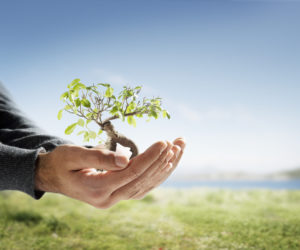
Additional terraculture growing structures
Host festivals and other fund-raising activities
Broaden economic cottage industries
Broaden public outreach
Stage 4 – Full Economic Production and Sustainable Housing
Commercial food and distribution model in place
Community member homesteads are fully producing
Two-acre yield at 300,000 lbs/year @ avg. $1/lb = sustainable economic community and personal revenue
What Is Needed
Community Members
200 – 250 resident agrarian lifestyle households
Growers
Grant-writers
Fund-raisers
Educators
Public Relations
Event Coordinators
Site Management
Project Managers
Builders
Brickmakers
Engineers
Resources
Land – 1 square mile
Clay from excavation (30%) plus gravel to create first home
Materials donations of wood, windows/glass, irrigation supplies
EPDM rubberized sheeting for roofs
Financial donations
Investors
Beehab
Hemp farms
Equipment design/development –
machine to recycle plastic bottles into greenhouse sheeting
machine to vitrify (melt) brick
Land lease/purchase
Other
Volunteers
Six people for a weekend is enough to make bricks for a home
Meal preparation and event coordination
Bloggers/Social Media
Sponsors
Underwriting student interns
Community members
Builders
Underwrite first Terraculture Project Sustainable Community Reality Show

